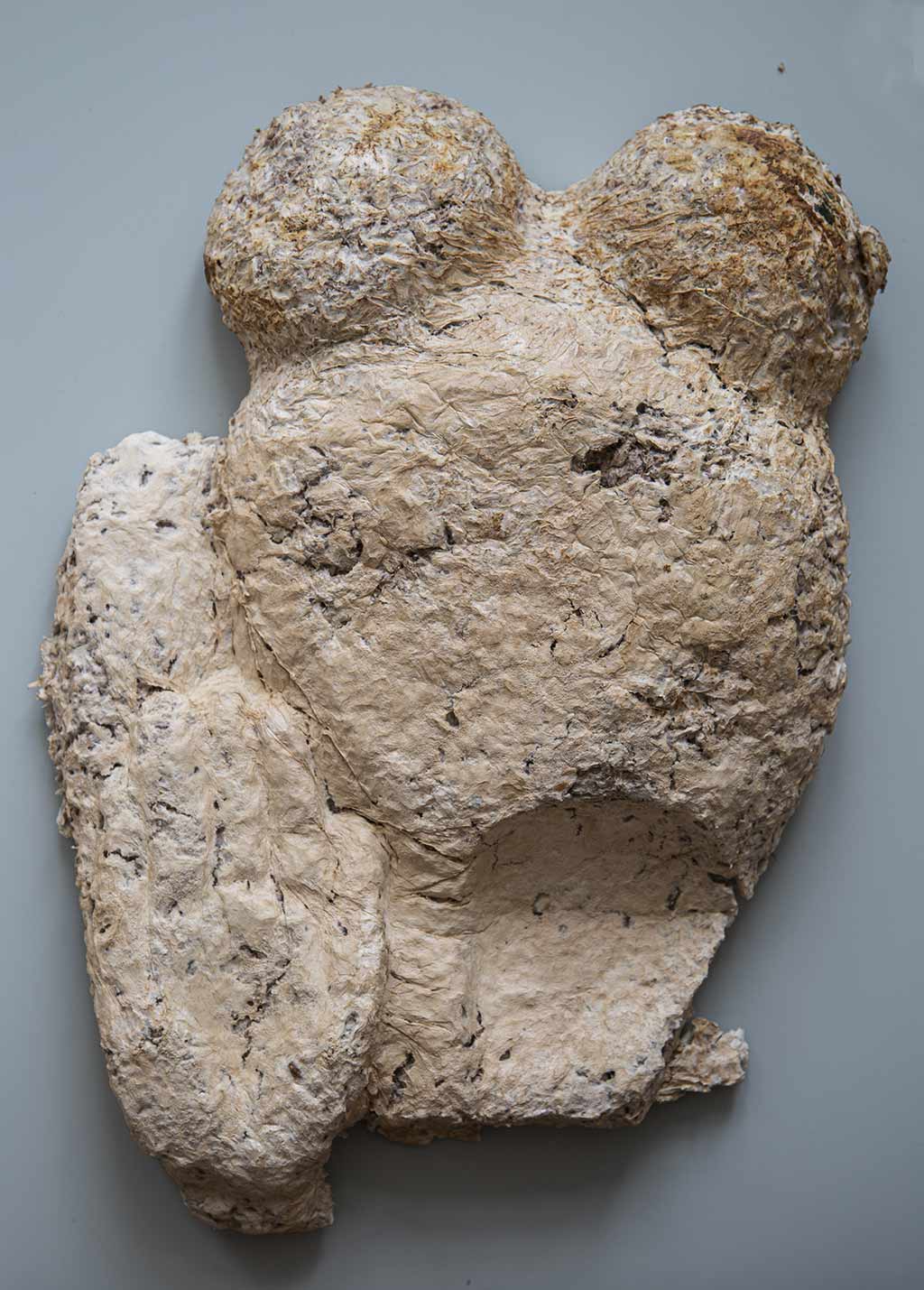

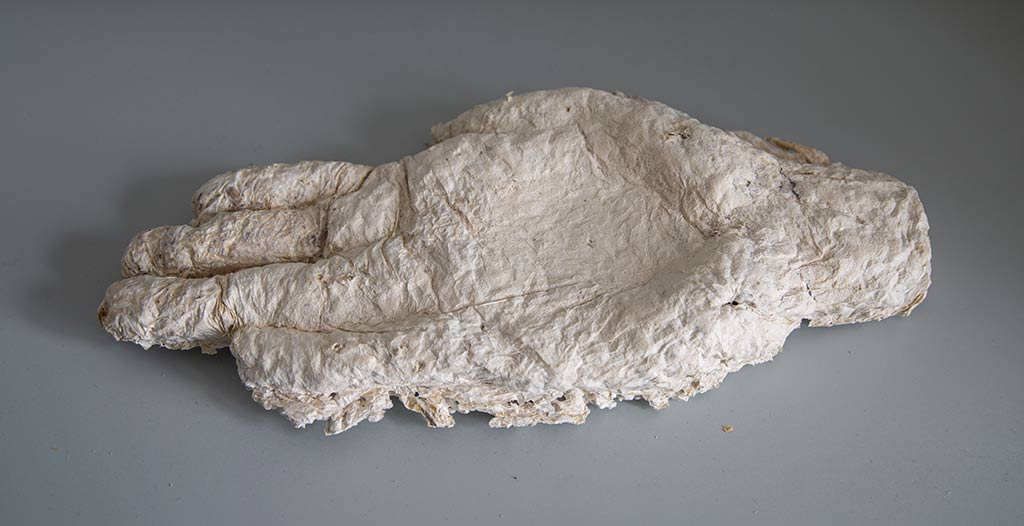







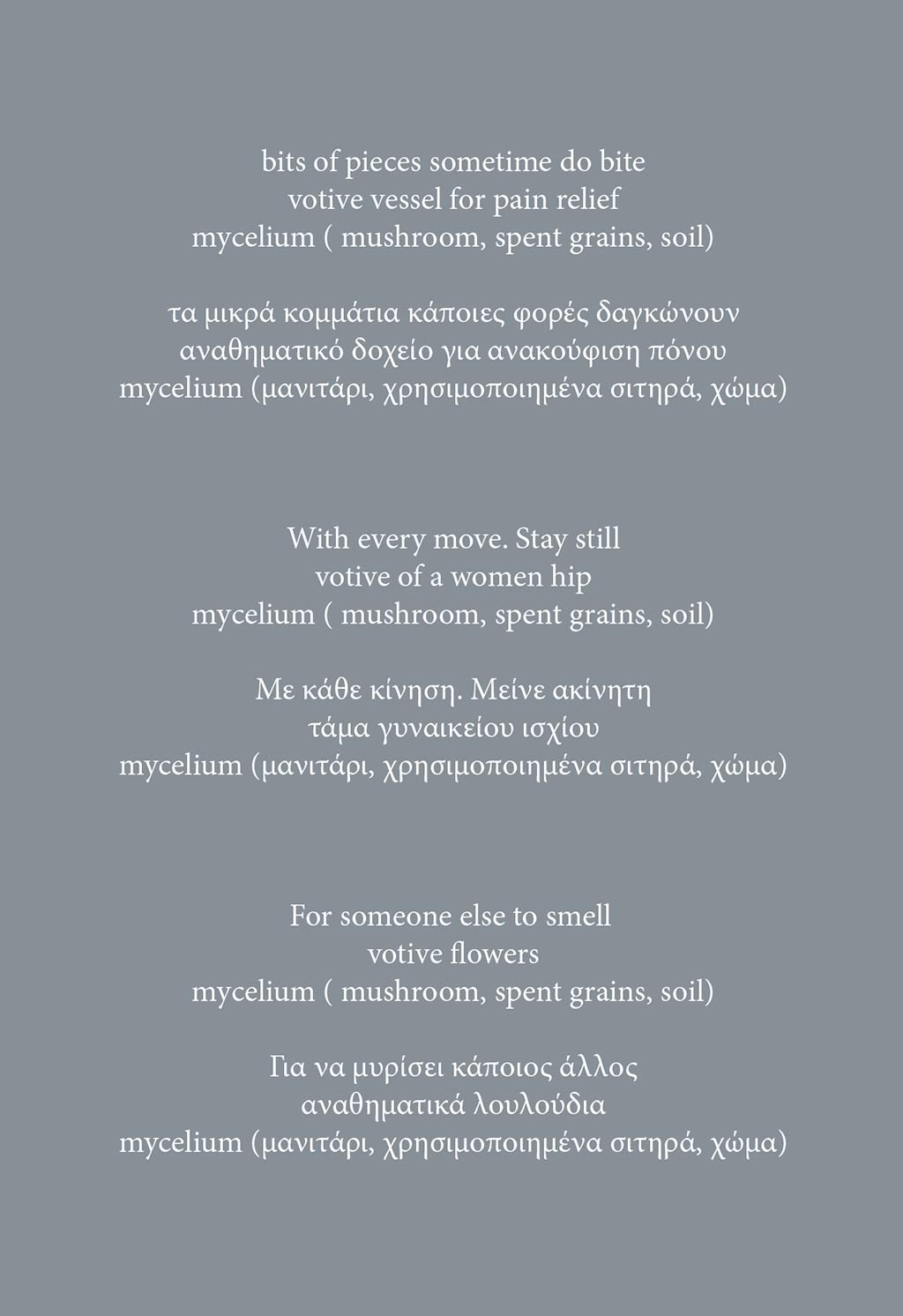
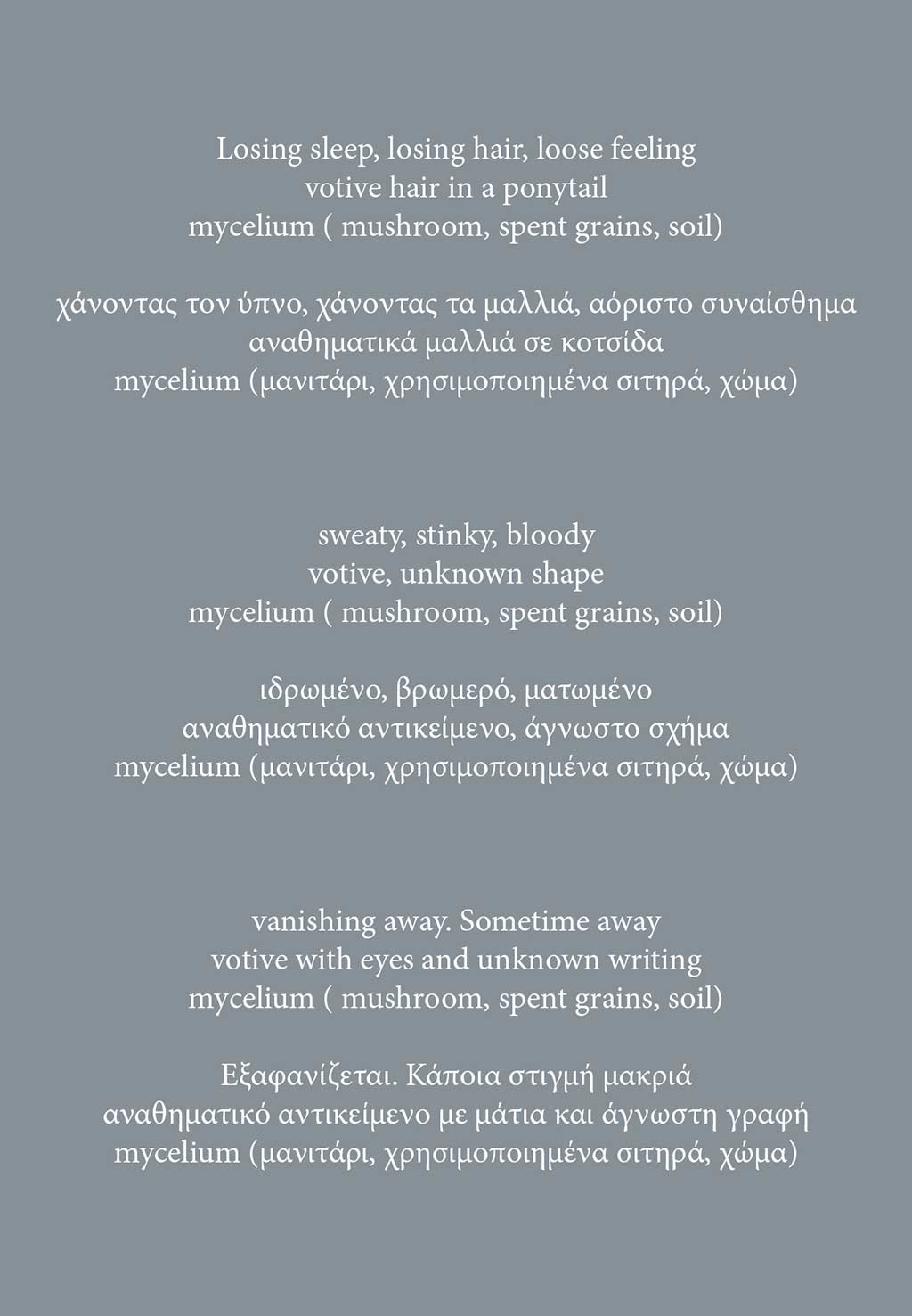
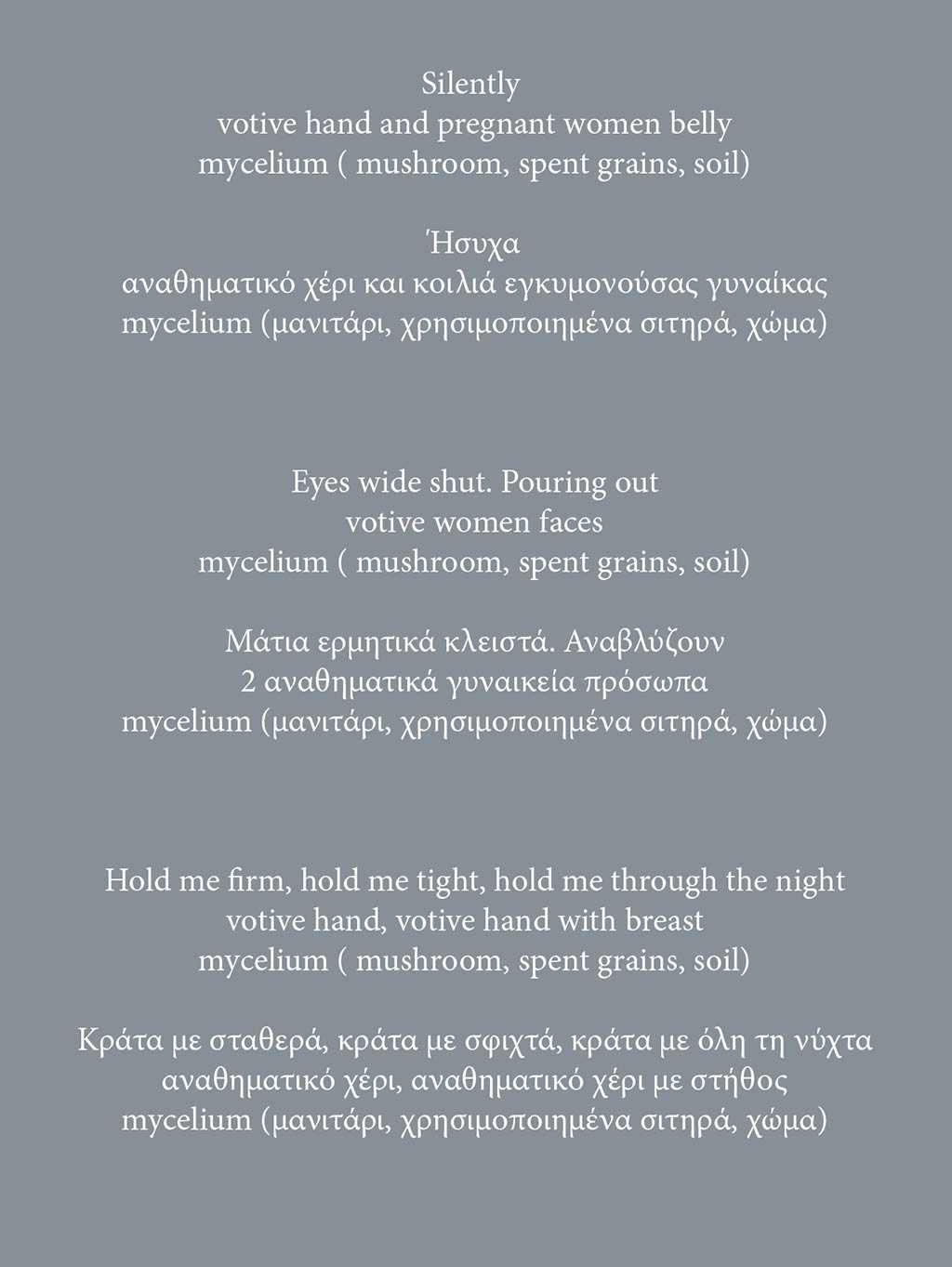
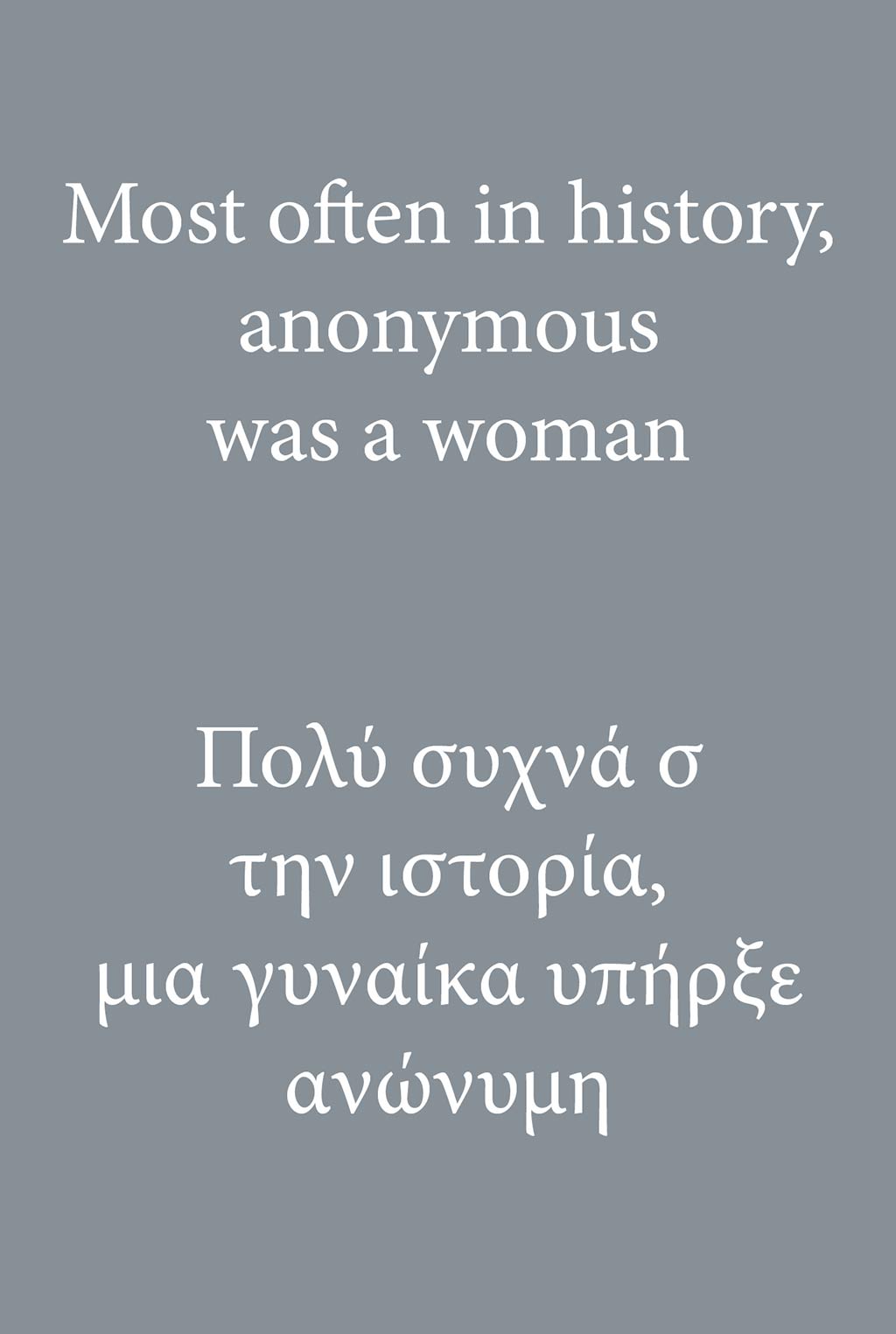 Installation of votive objects made out of mycelium, poems
Installation of votive objects made out of mycelium, poems
2022
Exhibition held at Psychiatric Hospital of Attica, Dafni, Athens, Greece
Curated by Kostas Prapoglou
Votives recall ancient worshiping objects displayed into sanctuaries. Instead of being made out of stone or marble; two material that last over generations, the votives of Material Instinct are made out of mycelium and cereal waste. Mycelium is the vegetative part of a fungus, or fungus like bacterial colony. Together with cereal crops it becomes a biodegradable and solid material that can be buried afterwards as to become food for the soil again.
Material Instinct is an ode to processes of transformation. Reflecting on inner feeling and process around maternity and motherhood; the votives’ shapes and their related poems are connected to female parts of body in some intimate and invisible moments.
Material Instinct, trough its materiality and shapes, questions the value of the present and the past, impermanence, the unknown directions to come. What to carry with and how to build up a future with empathy and forgiveness.
Here, mushrooms are growing on nipples. Silently vanishing away after some time, they will dissolve into the ground to remain a nutriment for the next thing to come; letting grow something anew again.
Reflecting on the bodies, the senses, the emotions; in Material Instinct, « the meanings and the materials meet and co-join in a state of anthropocentric interaction, an energy emerges that bridges and unifies everything, putting us all in the flow of a perpetual and incessant existential journey » (Kostas Prapoglou curatorial text for the exhibition reality check chapter ΙΙ: inner sanctum / Psychiatric hospital of Attica, Dafni / Athens, Greece ).
——————————————————————————————————-
Reality check chapter ΙΙ: inner sanctum
Curatorial text: Kostas Prapoglou
my destination is no longer a place, rather a new way of seeing
Marcel Proust
The geographical location of the Psychiatric Hospital of Attica (Dafni, Athens) is situated on the axis of the ancient Sacred Way that connects the city of Athens with Eleusis. This is where the ritual and procession of the Eleusinian Mysteries used to take place in antiquity. Just across the road from the hospital, one could find the temple of God Apollo (Dafnaios Apollo), above which the Byzantine Monastery of Dafni was later built. The sanctuary of Aphrodite (Aphaia Skaramanga – Haidari) was also located on the same axis. It incorporated carvings and niches on the natural bedrock, where the pilgrims used to place votive offerings to the goddess praying for personal uplift, fulfillment of desires and catharsis.
As a place of ultimate spirituality, noetic uplifting and mental rebirth, the first State Psychiatric Hospital of Athens was founded in 1925 and has been operating continuously until today.
In 2021, the group exhibition reality check took place in one of the largest –abandoned– buildings of the hospital grounds with the participation of 34 artists, turning our attention beyond the objective hypostasis of a psychiatric institution.
One year later, the exhibition reality check chapter II: inner sanctum returns to the same place seeking through contemporary art answers to new questions, figments of a dialogue between artists and viewers, which has been unfolding unceasingly since the artistic praxis gave a new breath of life to the empty building at Dafni.
Embarking with the notion of spacelessness [having and understanding no borders or limits] as a starting point, all participating artists are confronted by their very own selves. This exhibition does not deal with the theme of confinement; it extends beyond the limits of understanding our everyday life and surveys the construction of consciousness, emotion, the deconstructed and restructured speech, our language, and our dreams, placing emphasis on how these factors constantly set new limits to our perception of reality and self-awareness.
Does future exist and, if so, how close is it?
Do we live in the future and, if so, what value could possibly the present and the past have?
Suddenly, all these notions turn into subjective conditions intervening and affecting one another, one embedded into the other, negating and overrunning it, leading us towards a reformation of the mental axes and the perception of the world that we live in.
Spaceless time and timeless place are ubiquitous. We sail towards an unknown direction; the ‘unknown’ often disarms, disorients and paralyses us. And yet, an inner driving force awakens us, challenges us to continue, to breathe, to feel, to love [again]… life itself and our own self seeing it anew, reborn and resurrected.
This power is the inner sanctum that dwells and hides in our souls. It is the place that makes us feel at home. It is our refuge, the locus of our inner flame, our precious sanctuary. It may take time for each of us to discover and realise it. It is usually revealed as the prize for numerous intangible –and not only– battles, as a trophy of a great victory. It is reminiscent of the inner initiation process of those who were heading to Eleusis during the Sacred Mysteries. It is reminiscent of the carved niches at the Sanctuary of Aphrodite, where pilgrims deposited and entrusted their votive offerings to the goddess, asking for peace, euphoria, inner balance and love. The inner sanctum is kept vigorously in the depths of our soul, like a nook with our personal devotional secret idol. This object of worship is a living organism, a baby that grows, a plant that eventually blooms. This conceptual theme will be the basis, the yeast and the magic of the artistic creation in the second chapter of reality check.
As artists and audiences continue to experience their own process of perceiving and understanding the world, the idea of exploration and introspection of the inner sanctuary becomes more relevant than ever; it is an inter-personal, inter-social, and universal introspection.
The exhibition building is transformed into a body, in which each artist excavates their own sanctuary while each viewer walks through this building-body searching and unconsciously revealing their own references and origins. And as the bodies, the senses, the emotions, the meanings and the materials meet and co-join in a state of anthropocentric interaction, an energy emerges that bridges and unifies everything, putting us all in the flow of a perpetual and incessant existential journey.
Each artist has a separate room, while the viewer has the opportunity to converse with them following their own –personal– mapping of the exhibition. This process gives the audience an opportunity to discover, decipher and interpret the works in their own time. They follow a course within the objective space, while simultaneously developing a dialogue with the subjectivity of space-time into which they gradually surrender.
